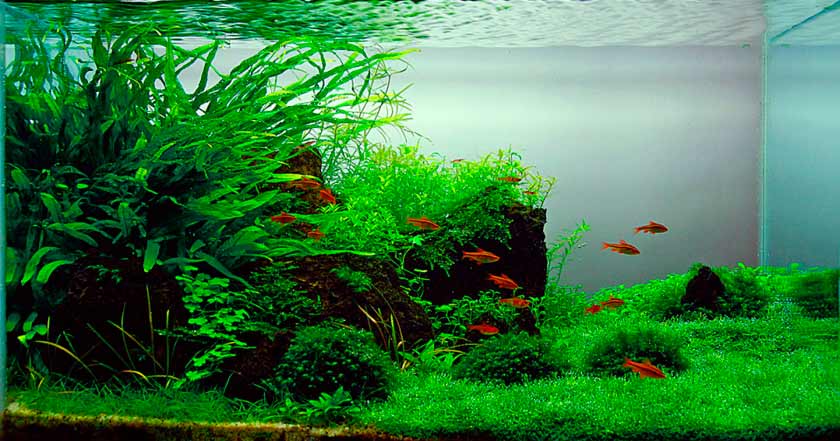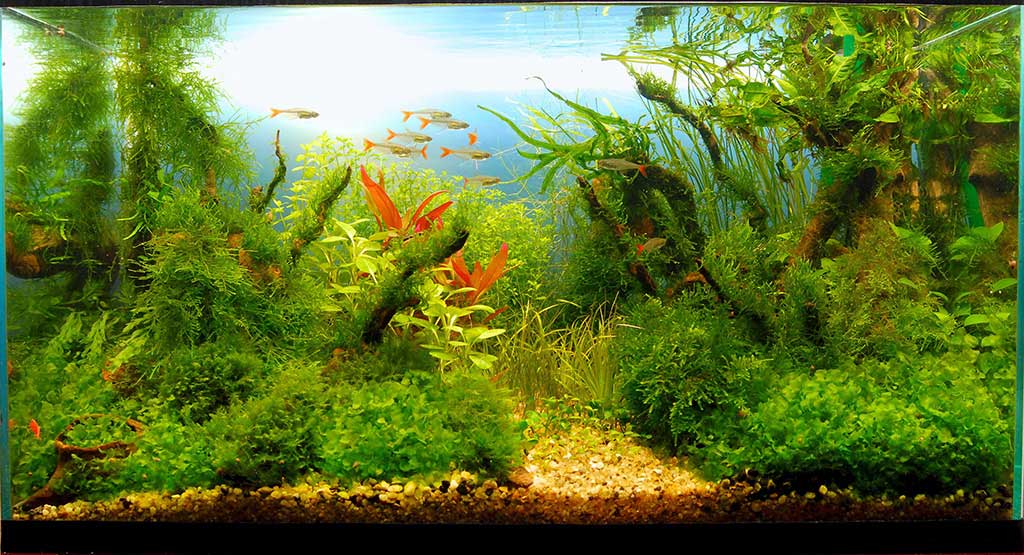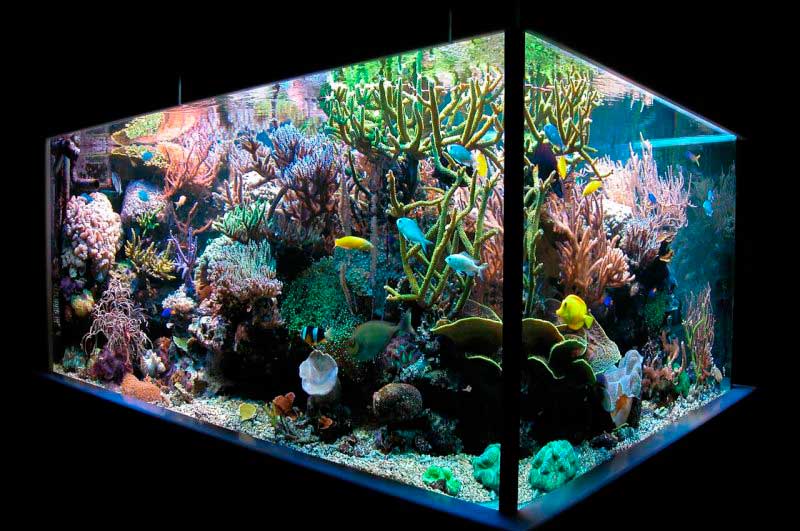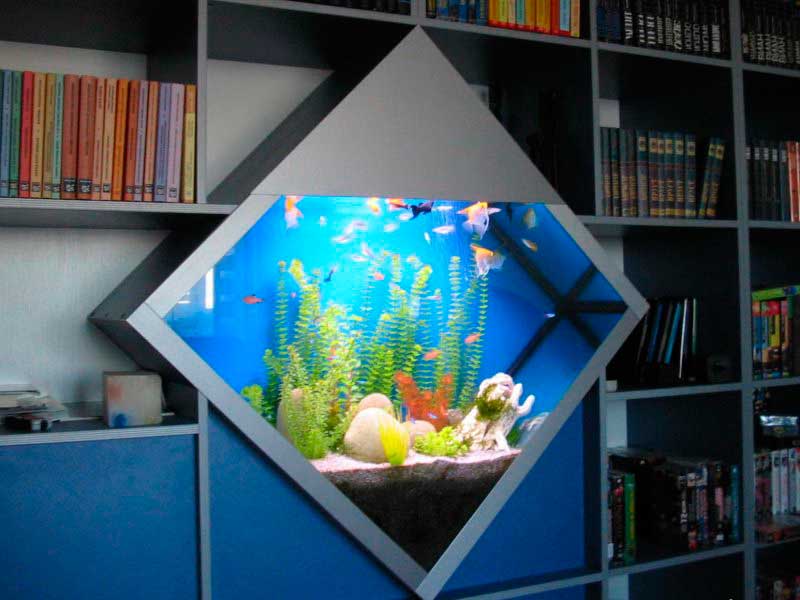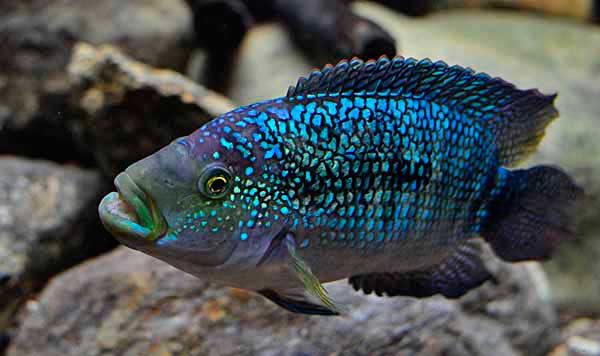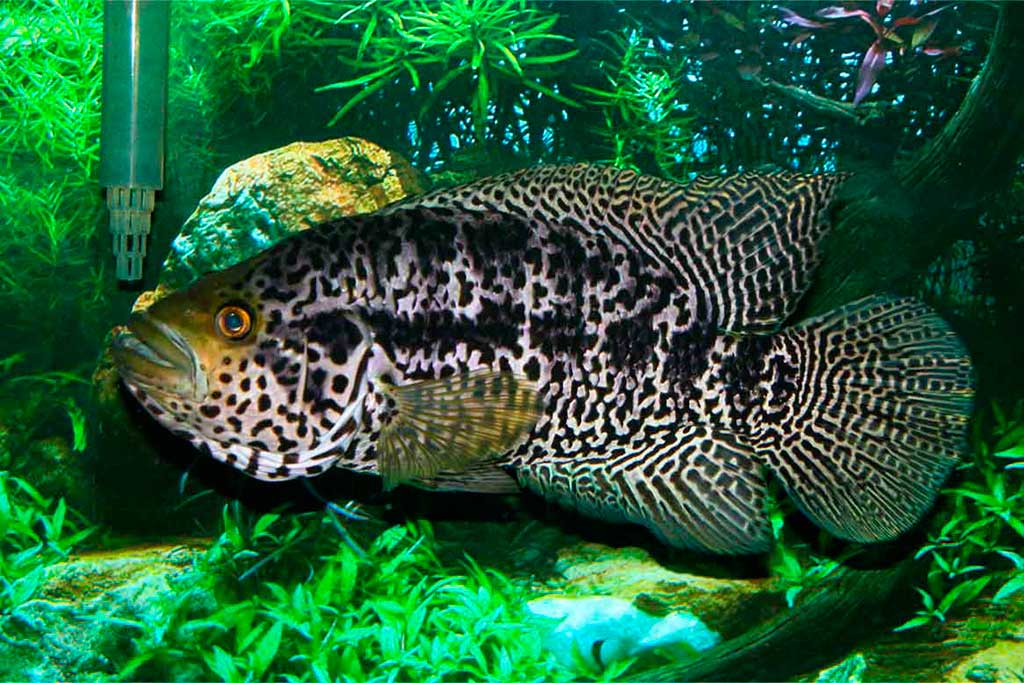Among most modern aquarium hobbyists, one of the most common is a small freshwater aquarium, that is, with fresh, ordinary water . This is primarily for several different reasons. Here we will focus on three main ones.
- First, the vast majority of freshwater plants and fish are much easier to keep;
- Secondly, a great many fish kept in such aquariums can breed specifically in fresh water;
- Thirdly, there is now no great shortage of very beautiful, small-sized and fairly inexpensive species.
Under the term “freshwater aquarium” there are two main types of them.
The first is the aquarium community itself. And as the name itself suggests, it can primarily consist of various species of plants and fish that harmoniously coexist together.
The second type of aquarium is an aquarium that is designed to contain only one type of aquarium fish. Such type aquariums are arranged in the case that the natural habits of its inhabitants do not tolerate any close proximity to other species, but this does not mean that this type of fish are kept separately only because they can not get along with other fish. Some, for example, experienced aquarists can specifically keep a single species and breed only him.
Fish for a common freshwater aquarium
The aquarium community is the most popular among novice aquarists. Most often still contain a community of fish not related types and species. You only need to take into account the requirements for the composition of water and its basic characteristics. As well as peacefulness, that is, tolerance of the fish themselves to their neighbors, including plants in the aquarium. For example, to such species may well include all known and favorite guppies, danio, neon tetra, dwarf gourami, male famous Chinese fighting fish and similar species.
Other communities, on the other hand, usually include species that under natural conditions occur only in one place, in one region, under similar natural conditions. For example, Africa’s deep reef lakes. These species are very demanding in terms of water chemistry. If, despite this, you still give preference to more demanding cichlids from African deep reef lakes with many calcareous caves, you will only need to prepare more thoroughly theoretically and practically. But, more preferably, you should start with less demanding fish and plants.
Water maturation in a freshwater aquarium
As soon as your first steps in this fascinating endeavor have been completed, the aquarium will take on a life of its own, the water will change and mature. This does not mean that the process can be left to run its course. Everything must be under your close control. Newly created by you system “raw”, and to accept new animals (fish, snails), you will need to wait a little. But plants in a new aquarium will take root much faster.
Water poured into a new aquarium should be tempered for at least 4-5 days. A small period of maturation is simply necessary for any new aquarium. And even with all the modern techniques for cleaning and maintaining balance, as well as newly planted plants, it takes a period of time for the water to mature. This process is called new aquarium syndrome. But even these minor problems can be largely avoided by following a few simple rules.
In freshwater aquariums, the maturation process lasts about a week. In marine systems, however, it can take longer. It is worth lighting a new freshwater aquarium for 13-15 hours a day, and for 6-7 days, adjust the temperature, flow, water hardness and all other parameters. During this short period of time, the water in the new aquarium can get a little cloudy, but it is quite acceptable. Literally after a few days itself it will clear up.
Sequence of occupancy
But plants in a freshwater aquarium can be introduced immediately to quickly restore the biological balance. But fish, especially valuable fish, should only be introduced after the water has fully matured. You should not want too much from the start. Populate your aquarium for now only half. Then you should gradually add fish – this is the safer way. And, among other things, you will give additional time to fully adjust the biological natural balance to the ever-increasing population. The most optimal volume of water for 1 specimen is considered to be 5 liters. That is suggested for everyone to take as a basis for calculations. About the size and basic characteristics of the fish themselves are not always said. But, of course, the bigger the fish, the larger the volume it will require. Everything comes with experience. And here the main thing is not to hurry! Good luck to you!
